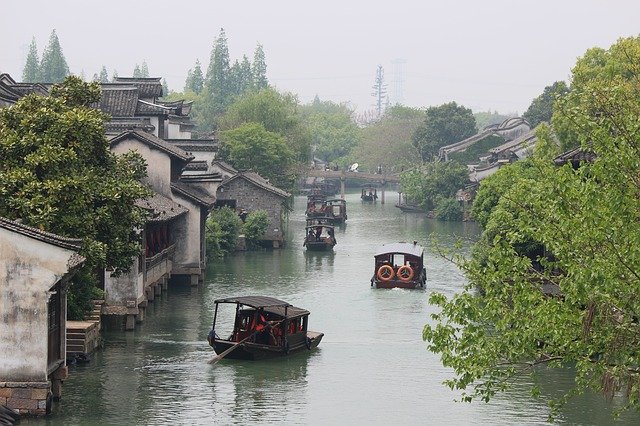Molecule of the Month: Rubisco - PDB-101
文章推薦指數: 80 %
Chloroplasts are filled with rubisco, which comprises half of the protein. This makes rubisco the most plentiful single enzyme on the Earth. Rubisco also shows ... TogglenavigationPDB-101MoleculeoftheMonthMotMCurrentFeatureByCategoryByDateByTitleAboutMoleculeoftheMonthImageDownloadNewsletterSubscriptionBrowseLearnPaperModelsFlyers,Posters,&CalendarsVideosInteractiveAnimationsColoringBooksEducationCornerGuidetoUnderstandingPDBDataStructuralBiologyHighlightsPDB&DataArchivingCurriculum3DPrintingResourcestoFighttheCOVID-19PandemicOtherResourcesGlobalHealthHealthDiabetesMellitusTeachOverviewofCurriculumModulesBiomolecularStructuresandModelsCOVID-19inMolecularDetailDiabetesataMolecularLevelMolecularImmunologyMolecularViewofHIV/AIDSSciArtIrvingGeisDavidGoodsellEventsCOVID-19BootCampVideoChallengeScienceOlympiadPosterPrizeArtofSciencePDB50MoreAboutPDB-101ContactusHowtoCiteEducationalportalofMolecularexplorationsthroughbiologyandmedicineGoEducationalportalof MoleculeoftheMonthByCategoryByDateByTitleRubiscoRubiscofixesatmosphericcarbondioxideintobioavailablesugarmoleculesRibulosebisphosphatecarboxylase/oxygenase(Rubisco).DownloadhighqualityTIFFimageFixingCarbonCarbonisessentialtolife.Allofourmolecularmachinesarebuiltaroundacentralscaffoldingoforganiccarbon.Unfortunately,carbonintheearthandatmosphereislockedinhighlyoxidizedforms,suchascarbonatemineralsandcarbondioxidegas.Inordertobeuseful,thisoxidizedcarbonmustbe"fixed"intomoreorganicforms,richincarbon-carbonbondsanddecoratedwithhydrogenatoms.Poweredbytheenergyofsunlight,plantsperformthiscentraltaskofcarbonfixation.Insideplantcells,theenzymeribulosebisphosphatecarboxylase/oxygenase(rubisco,shownherefromPDBentry1rcx)formsthebridgebetweenlifeandthelifeless,creatingorganiccarbonfromtheinorganiccarbondioxideintheair.Rubiscotakescarbondioxideandattachesittoribulosebisphosphate,ashortsugarchainwithfivecarbonatoms.Rubiscothenclipsthelengthenedchainintotwoidenticalphosphoglyceratepieces,eachwiththreecarbonatoms.Phosphoglyceratesarefamiliarmoleculesinthecell,andmanypathwaysareavailabletouseit.Mostofthephosphoglyceratemadebyrubiscoisrecycledtobuildmoreribulosebisphosphate,whichisneededtofeedthecarbon-fixingcycle.Butoneoutofeverysixmoleculesisskimmedoffandusedtomakesucrose(tablesugar)tofeedtherestoftheplant,orstoredawayintheformofstarchforlateruse.SlowandSteadyInspiteofitscentralrole,rubiscoisremarkablyinefficient.Asenzymesgo,itispainfullyslow.Typicalenzymescanprocessathousandmoleculespersecond,butrubiscofixesonlyaboutthreecarbondioxidemoleculespersecond.Plantcellscompensateforthisslowratebybuildinglotsoftheenzyme.Chloroplastsarefilledwithrubisco,whichcompriseshalfoftheprotein.ThismakesrubiscothemostplentifulsingleenzymeontheEarth.Rubiscoalsoshowsanembarrassinglackofspecificity.Unfortunately,oxygenmoleculesandcarbondioxidemoleculesaresimilarinshapeandchemicalproperties.Inproteinsthatbindoxygen,likemyoglobin,carbondioxideiseasilyexcludedbecausecarbondioxideisslightlylarger.Butinrubisco,anoxygenmoleculecanbindcomfortablyinthesitedesignedtobindtocarbondioxide.Rubiscothenattachestheoxygentothesugarchain,formingafaultyoxygenatedproduct.Theplantcellmustthenperformacostlyseriesofsalvagereactionstocorrectthemistake.Rubiscofromspinach(left)andphotosyntheticbacteria(right).DownloadhighqualityTIFFimageSixteenChainsinOnePlantsandalgaebuildalarge,complexformofrubisco(shownontheleft),composedofeightcopiesofalargeproteinchain(showninorangeandyellow)andeightcopiesofasmallerchain(showninblueandpurple).Theproteinshownhereistakenfromspinachleaves(coordinatesmaybefoundinthePDBentry1rcx;thetobaccoenzymemaybefoundin1rlc).Manyenzymesformsimilarsymmetricalcomplexes.Often,theinteractionsbetweenthedifferentchainsareusedtoregulatetheactivityoftheenzymeintheprocessknownasallostery.Rubisco,however,seemstoberigidasarock,witheachoftheactivesitesactingindependentlyofoneanother.Infact,photosyntheticbacteriabuildasmallerrubisco(shownontheright,takenfromPDBentry9rub)composedofonlytwochains,whichperformsitscatalytictaskjustaswell.So,whydoplantsbuildalargecomplex?Theanswermightlieinthecrowdedconditionsunderwhichrubiscoperformsitsjob.Bypackingmanychainstogetherintoatightcomplex,theproteinreducesthesurfacethatmustbewettedbythesurroundingwater.Thisallowsmoreproteinchains,andthusmoreactivesites,tobepackedintothesamespace.ExploringtheStructureTheactivesiteofrubiscoisarrangedaroundamagnesiumion.Inthispicture,drawnusingcoordinatesfromPDBentry8ruc,themagnesiumionisshownatthecenteringreen.Aboveitisasmallsugarmoleculethatissimilartotheproductoftherubiscoreaction,andashortstretchoftheproteinchainisshownatthebottom.Inreality,therubiscoproteinchainscompletelysurroundthesemoleculesbutarenotshownhereforclarity.Themagnesiumionisheldtightlybythreeaminoacids,includingasurprisingmodifiedformoflysine(thebondsbetweentheionandtheproteinareshownbythethreeyellowlinesgoingdownwards).Anextracarbondioxidemolecule,showninlargerspheresjustbelowthemagnesiumion,isattachedfirmlytotheendofthesnakylysinesidechain.Inplantcells,this"activator"carbondioxide,whichisdifferentfromthecarbondioxidemoleculesthatarefixedinthereaction,isattachedtorubiscoduringtheday,turningtheenzyme"on,"andremovedatnight,turningtheenzyme"off."Theexposedsideofthemagnesiumionisthenfreetobindtobothribulosebisphosphate,holdingontotwooxygenatoms(smallredspheres),andthecarbondioxidemoleculethatwillbeattachedtosugar.Inthisstructure,thecarbondioxide,shownwithlargerspheresabovethemagnesiumion,isalreadyattachedtothesugar.ThisillustrationwascreatedwithRasMol.Youcancreatesimilarillustrationsbygoingtoentry8rucandchooseoneoftheoptionsfor3Dviewing.Youwillfindthattheasymmetricunitofthisstructureincludesonlyonehalfoftheentirerubiscocomplex,sobesuretoviewthebiologicalassembly.Or,youcanexplorethestructurein1rcx,whichcontainsallsixteenchains.RelatedPDB-101ResourcesBrowseBiologyofPlantsBrowseEnzymesNovember2000,DavidGoodselldoi:10.2210/rcsb_pdb/mom_2000_11AboutMoleculeoftheMonthTheRCSBPDBMoleculeoftheMonthbyDavidS.Goodsell(TheScrippsResearchInstituteandtheRCSBPDB)presentsshortaccountsonselectedmoleculesfromtheProteinDataBank.Eachinstallmentincludesanintroductiontothestructureandfunctionofthemolecule,adiscussionoftherelevanceofthemoleculetohumanhealthandwelfare,andsuggestionsforhowvisitorsmightviewthesestructuresandaccessfurtherdetails.MoreAboutPDB-101PDB-101helpsteachers,students,andthegeneralpublicexplorethe3Dworldofproteinsandnucleicacids.Learningabouttheirdiverseshapesandfunctionshelpstounderstandallaspectsofbiomedicineandagriculture,fromproteinsynthesistohealthanddiseasetobiologicalenergy.WhyPDB-101?Researchersaroundtheglobemakethese3DstructuresfreelyavailableattheProteinDataBank(PDB)archive.PDB-101buildsintroductorymaterialstohelpbeginnersgetstartedinthesubject("101",asinanentrylevelcourse)aswellasresourcesforextendedlearning.RCSBPDB(citation)ishostedbyRCSBPDBisamemberofRCSBPDBisfundedbytheNationalScienceFoundation(DBI-1832184),theUSDepartmentofEnergy(DE-SC0019749),andtheNationalCancerInstitute,NationalInstituteofAllergyandInfectiousDiseases,andNationalInstituteofGeneralMedicalSciencesoftheNationalInstitutesofHealthundergrantR01GM133198.
延伸文章資訊
- 1RuBisCO - an overview | ScienceDirect Topics
Rubisco is ubiquitus for photosynthetic organisms and is regarded as the most abundant protein on...
- 2【生物奧妙】人算不如天算之光合作用改進
因為光呼吸作用會消耗能量,對植物來說當然是有害無益;但是偏偏Rubisco就是沒辦法把對氧氣的親和力完全去除。由於Rubisco只能利用溶於水的氣體(不論 ...
- 3核酮糖-1,5-二磷酸羧化酶_百度百科
核酮糖-1,5-二磷酸羧化酶/加氧酶(Ribulose-1,5-bisphosphate carboxylase/oxygenase,通常简写为RuBisCO)是一种酶(EC 4.1.1.39)...
- 4A short history of RubisCO: The rise and fall (?) of Nature's ...
Ribulose-1,5-bisphosphate carboxylase/oxygenase (RubisCO) is arguably one of the most abundant pr...
- 5核酮糖-1,5-二磷酸羧化酶/加氧酶 - 维基百科
1,5-二磷酸核酮糖羧化酶/加氧酶(英語:Ribulose-1,5-bisphosphate carboxylase/oxygenase,通常简写为RuBisCO)是一种酶(EC 4.1.1.3...

